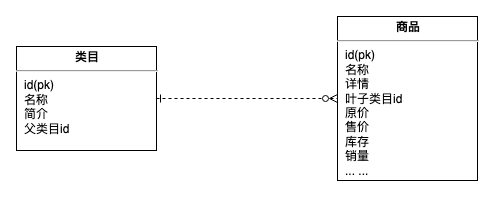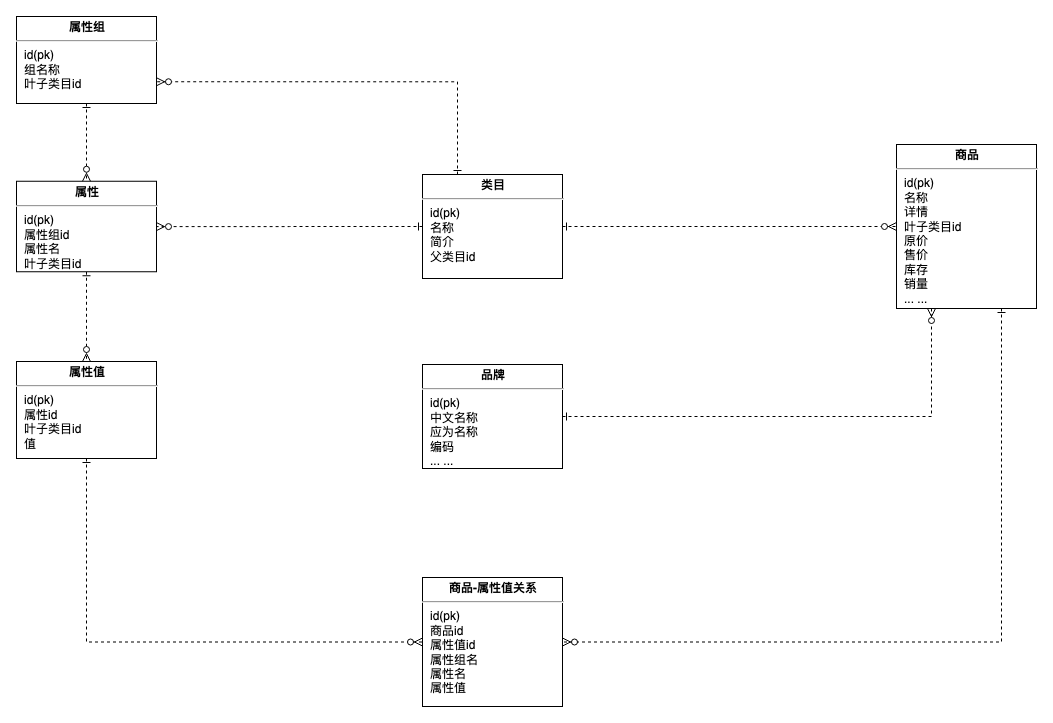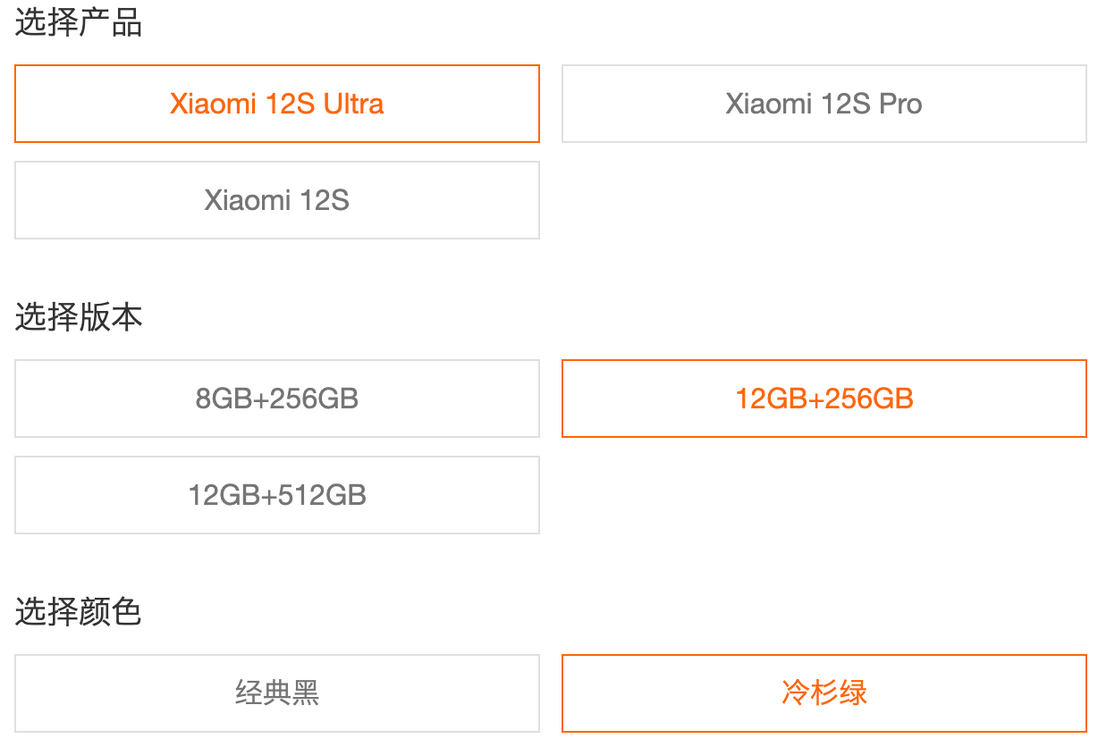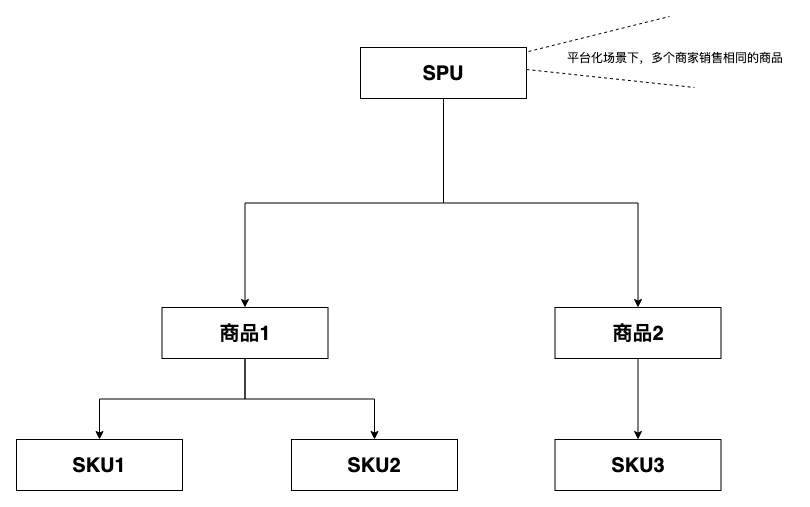It's been a long time since I brought you new knowledge to share. The first article in 2022 (yes, you read that right! The first article) will tell you about the evolution of commodity models! I hope it will be helpful for your work~~
Let's assume: Now you need to start e-commerce from scratch, you have no experience, and there is no competition to refer to, you are the only one in the world! What will your system be like? Let's clear the clouds and see the sun together!
smoke cloud
From the perspective of technology, to build an e-commerce commodity system, there is no doubt that you need a commodity entity. At the same time, in order to facilitate users to filter and browse on the C-side, it is inherited from the CMS idea (column-->article model), which is easy to think of. Add a category to each category of products, and assign similar products to the same category. For example, the wine area and grain and oil area seen in the supermarket are a classification of similar products. At this point our model is as follows:
Don't look at this simple model, he can run at the beginning. However, this classification method encounters a problem with the development of the business. Some well-known brands not only produce products in one category, such as Xiaomi, but also make mobile phones and mobile phone cases! So what should consumers do if they want to find a Xiaomi mobile phone case under the above model? You can only find the category of mobile phone cases first, and then flip through them one by one! The appeal at this time is, how can the system quickly find out the phone case of Xiaomi? The idea is nothing more than two: one is to let consumers choose Xiaomi after choosing a mobile phone case, or consumers choose Xiaomi first, and then choose a mobile phone case! Of course, no matter which of these two methods is adopted, there is a problem. How should [Xiaomi] express it on the model? Corresponding to the real physical world, the concept of brand is abstracted.
After the above model evolves, consumers want to go further and quickly find the products they want. For example, skirts have different styles, lengths, and materials; electronic products such as mobile phones have differences in CPU, camera pixels, battery capacity, and so on. That is to say, the attributes of products in the same category will be different, and through these attributes, products can be quickly screened and located.
A category can have several attributes, and each attribute has multiple attribute values; and because a commodity corresponds to a category, a commodity will have multiple attribute values. Based on this, the model now evolves into:
At this point, it seems that the basic abilities can be satisfied, but in conducting business online, we found that there is another characteristic. For example, when buying a mobile phone, there are: Xiaomi 12S Ultra 8GB+256GB classic black; Xiaomi 12S Ultra 12GB+256GB fir green and other options, then according to the above model, we will create two corresponding products for these two types. Although it can be satisfied technically, from the perspective of consumers, he wants to see all the information of Xiaomi 12S first and then choose gradually. How to aggregate these two highly related products on the page?
At this time, there are two options, the typical ones are the respective plans of JD.com and Taobao (because I haven't actually stayed or read the code. So some of the content is purely from YY+ network data sources, if there is any similarity, it is purely accidental!)
what fits is the best
Jingdong's choice
What JD.com chooses is: each different specification corresponds to a product (we will not talk about the concept of sku here), and then specific to the consumer side, it will aggregate these products of different specifications, we can roughly guess (because there is no real seen, can only guess) their model is as follows:
In actual implementation, the commodity-package relationship may be directly redundantly stored in the commodity.
Taobao's choice
In Taobao's product model, the different specifications in Xiaomi12s are abstracted separately. Products with different specifications are called SKU (Stock Keeping Unit), which carries price, inventory and other information, and the goods carry the common information of different SKUs of 12s. , such as: category, brand, attribute value, etc.
When using this model, the exposure on the consumer side is based on the product dimension; find the corresponding SKU through the product and then render the page.
What are the advantages and disadvantages of different options like JD.com and Taobao? Or will there be one mode that overwhelms the other? We can do a simple analysis through the table:
| Jingdong Model: Single-layer Commodity Model | Taobao Model: Two-tier Commodity Model | Compare |
|---|---|---|
| The SKU on the consumer side directly corresponds to the goods in the supply chain | The SKU under the commodity on the consumer side corresponds to the commodity in the supply chain | JD.com's self-operated historical background, this interaction with the supply chain is more direct |
| Information governance, optimization and repeated actions | Structured information governance only looks at commodities | Taobao model information quality management is more convenient |
| Complete information is stored in each SKU | SKUs share information on products, and SKUs have differentiated information | The Taobao model has lower storage costs and more direct presentation on the consumer side (JD.com still needs to add a virtual layer of SKU package concept for aggregated display) |
| SKU differentiation is easier to do (such as SKU-dimension channels, transactions, performance, etc.) | High implementation cost of SKU dimension differentiation (same as before) | The Taobao model has high link costs (mainly stability and R&D costs) for businesses that require more detailed and differentiated SKUs. |
The birth of SPU
Through the above analysis, you should be able to understand how the concepts of categories, brands, attributes, specifications, commodities, and SKUs have evolved. But there seems to be a missing link here, where is the SPU reflected? Next, we will continue the above logic to deduce the birth process of SPU.
In fact, SPU is not necessarily required by all e-commerce companies. Generally speaking, in self-operated e-commerce, SPU == commodity, while in platform-based e-commerce, SPU is the upper level of commodity. Why is there such a difference? We disassemble and analyze step by step. Note that the following are all derived according to the two-layer model of product-sku, and there is no one-layer SKU model involved in JD. I personally think that the evolution ideas should be similar.
Self-operated: only one merchant on its own platform
When there is only one merchant, each product is unique on the platform. For example, when you buy Xiaomi 12s on the official website of Xiaomi, you will not say that there are two entrances. The corresponding information, price, service and differentiation will be different. Naturally unified. At this time, if we abstract another SPU independent concept on the product, it is meaningless. Therefore, the actual model at this time can be understood as the following
Platform: Support multiple merchants to play here
Self-operated does not need to distinguish SPU, why does the platform need to be distinguished? Here we continue to use Xiaomi 12s as an example. Since it is a platform-based e-commerce, there may be many merchants selling this product. From a physical concept, we know that everyone buys the Xiaomi 12s mobile phone, which is an independent merchant in the system. How do we identify the relevance of these mobile phones? In addition to the correlation, these mobile phones are all produced by the same company, and some of their information is the same. Does each merchant have to fill in it repeatedly? We can look at the problem from at least the following three perspectives:
supply
- Understand SPU as a template based on which all merchants can quickly fill in public information
- The platform can also strengthen the management and control of some types of commodities based on SPU, and improve the integrity and quality of the structured information of the supplied commodities
Consumption
- Aggregate similar products through shopping guide locations to improve consumer screening efficiency
- The same recognition assistance algorithm improves accuracy
platform
- With the associated identifier of the SPU, the statistics, operation, and control of a certain SPU can be realized within the scope of the platform.
Based on the above SPU logic, we can further propose the concept of CSPU, because since the product dimension is already standardized, some information in the SKU dimension can also be standardized, which can solve the above-mentioned supply and shopping guide problems in a finer-grained manner. . From this, the following structure can be deduced:
So does it end here? No, the business and political environment in the real world continue to develop and become more and more complex, such as the emergence of global operations and regional refined operations. The above forms have new demands from supply to consumption. For example, in the past, all merchants on the platform were based on SPU, but in the chain operation, a merchant may no longer correspond to only one store on the platform, but a one-to-many situation (typical Hema, Daily Youxian, etc.), will Match the corresponding store based on the user's location. However, the products sold by these stores are basically the same for this merchant. They just need to go to different stores to have different information. Even the information and permissions of the products in these stores can be modified by the store. It is also controlled by the headquarters merchant. In this case, we need the concept of a master file in the headquarters, and the store will distribute it based on the master file.
At this point, everyone can basically get how the core concepts in the commodity domain evolved. However, our derivation above does not involve the supply chain, because in the early business, the merchants usually turn the goods in their warehouses into the products on the platform for sale, but with the gradual improvement of the platform's development capabilities, whether it is for merchants To provide more service capabilities, or to start self-operated business, will begin to involve the supply chain. The core issues here are: business-goods relationship (mainly warehouse, inventory), stock sharing, stock exclusive, and quick turn-up from goods to goods, etc. How to solve these problems?
You are welcome to private message me, let's collide with sparks~~












**粗体** _斜体_ [链接](http://example.com) `代码` - 列表 > 引用。你还可以使用@来通知其他用户。